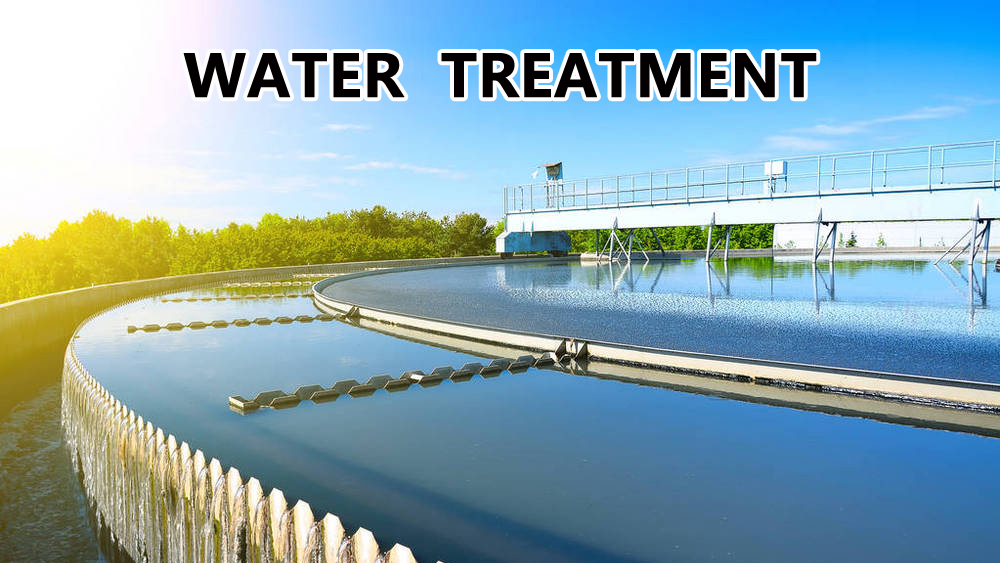Water/wastewater treatment plant

A by-product of sewage treatment plants is the production of waste containing many potential pollutants. Even chlorinated recycled water can contain disinfectant byproducts such as trihalomethane and haloacetic acid. Solid residues from sewage treatment plants, called biosolids, contain common fertilizers, but can also contain heavy metals and synthetic organic compounds found in household products.
The chemical industry faces significant environmental regulatory challenges in treating its wastewater discharges. Pollutants discharged by petroleum refineries and petrochemical plants include conventional pollutants such as oils and fats and suspended solids, as well as ammonia, chromium, phenol and sulfides.
Power plant
Fossil fuel power stations, especially coal-fired ones, are a major source of industrial wastewater. Many of these plants discharge wastewater containing high levels of metals such as lead, mercury, cadmium and chromium, as well as arsenic, selenium and nitrogen compounds (nitrates and nitrites). Plants with air pollution controls, such as wet scrubbers, often transfer captured pollutants into wastewater streams.
Steel/iron production
Water used in steel production is used for cooling and by-product separation. It is contaminated with products such as ammonia and cyanide during the initial conversion process. The waste stream includes benzene, naphthalene, anthracene, phenol and cresol. Forming iron and steel into plates, wires, or bars requires water as a base lubricant and coolant, as well as hydraulic fluid, butter, and granular solids. Water for galvanized steel requires hydrochloric and sulfuric acid. Wastewater includes acid rinse water and waste acid. Much of the steel industry’s wastewater is contaminated with hydraulic fluids, also known as soluble oils.
Metal processing plant
The waste from metal finishing operations is usually mud (silt) containing metals dissolved in liquids. Metal plating, metal finishing and printed circuit board (PCB) manufacturing operations produce large quantities of silt containing metal hydroxides such as ferric hydroxide, magnesium hydroxide, nickel hydroxide, zinc hydroxide, copper hydroxide and aluminum hydroxide. Metal finishing wastewater must be treated to comply with all applicable regulations due to the environmental and human/animal impacts of this waste.
Industrial laundry
The commercial textile services industry deals with a huge amount of clothing each year, and these uniforms, towels, floor MATS, etc., produce wastewater filled with oils, wadding, sand, grit, heavy metals, and volatile organic compounds that must be treated prior to discharge.
Mining industry
Mine tailings are a mixture of water and fine crushed rock that is left over from the removal of mineral concentrates, such as gold or silver, during mining operations. Effective disposal of mine tailings is a key challenge for mining companies. Tailings are an environmental liability as well as a significant cost challenge and opportunity to reduce transportation and disposal costs. Proper treatment can eliminate the need for tailings ponds.
Oil and gas fracking
Wastewater from shale gas drilling is considered hazardous waste and is highly saline. In addition, water mixed with industrial chemicals in injection Wells to facilitate drilling contained high concentrations of sodium, magnesium, iron, barium, strontium, manganese, methanol, chlorine, sulfate and other substances. During drilling, naturally occurring radioactive materials return to the surface along with the water. Fracking water can also contain hydrocarbons, including toxins such as benzene, toluene, ethylbenzene and xylene that can be released during drilling.
Food processing
Concentrations of pesticides, insecticides, animal waste and fertilizers in food and agricultural wastewater all need to be managed. In the process of processing food from raw materials, the water body is filled with a high load of particulate matter and soluble organic matter runoff or chemicals. Organic waste from animal slaughter and processing, body fluids, intestinal matter and blood are all sources of water contaminants that need to be treated.
Post time: May-04-2023

